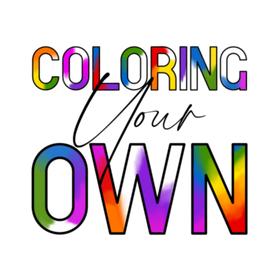What Does Your Favorite Color Mean?

Introduction:
Our color preferences can say a lot about our personalities and tendencies. While we may be drawn to certain colors and aversive to others, it is essential to note that our aversions may indicate our tendency to pick up on negative vibes of a color. At the same time, the colors we are drawn to may indicate our tuning into the positive frequency of a color.
Red:
Red is a color that often represents passion, energy, and excitement. It can increase the heart rate and evoke strong emotions such as love, anger, and fear. While red can be invigorating and create a sense of urgency, it can also increase stress levels and feelings of aggression.
Orange:
Orange is a vibrant color that represents enthusiasm, creativity, and warmth. It can increase energy levels and stimulate socialization, making it a popular color in marketing and advertising. However, too much orange can be overwhelming and create feelings of restlessness or irritability.
Yellow:
Yellow is a color that often represents happiness, optimism, and energy. It is known to stimulate the mind and improve mental clarity, making it a popular color for learning environments. However, excessive yellow can create feelings of anxiety and lead to over-stimulation.
Green:
Green is a color that often represents nature, balance, and growth. It is known to have a calming effect on the mind and body, making it a popular color for relaxation and healing. However, too much green can create feelings of boredom or stagnation.
Blue:
Blue is a color that often represents tranquility, trust, and wisdom. It is known to have a calming effect on the mind and body, making it a popular color for stress relief and meditation. However, excessive blue can create feelings of sadness and detachment.
Purple:
Purple is a color that often represents creativity, luxury, and spirituality. It is known to stimulate the imagination and promote inner peace and tranquility. However, too much purple can create feelings of irritability or arrogance.
Pink:
Pink is a color that often represents love, sensitivity, and femininity. It is known to have a calming effect on the mind and body, making it a popular color for stress relief and relaxation. However, excessive pink can create feelings of weakness or immaturity.
Black:
Black is a color that often represents sophistication, power, and elegance. It can create a sense of mystery and authority, making it a popular color for luxury branding. However, excessive black can create feelings of sadness or isolation.
White:
White is a color that often represents purity, simplicity, and clarity. It can create a sense of cleanliness and freshness, making it a popular color for healthcare and hygiene products. However, excessive white can create feelings of emptiness or coldness.
Brown:
Brown is a color that often represents stability, warmth, and earthiness. It can create a sense of comfort and reliability, making it a popular color for home decor and fashion. However, too much brown can create feelings of dullness or heaviness.
Color plays a significant role in our psychological well-being, and understanding its effects is essential for both personal and professional development. While each color has its unique benefits and drawbacks, finding a balance and incorporating a variety of colors into our lives can lead to a more balanced and fulfilling existence.


Leave a comment